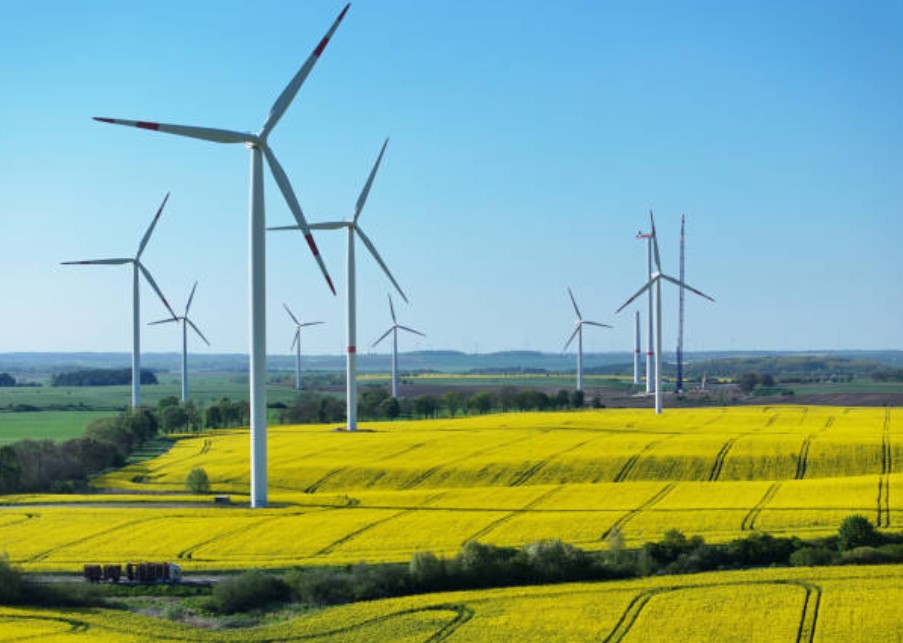India’s clean energy roadmap: India stands at a moment of extraordinary possibility. Installed renewable capacity is expanding at record speed, spanning solar, wind, hydro, biomass, and nuclear. Yet, the true test is not how much we add, but how fully and efficiently we use what is already generated. Unless every kilowatt-hour is delivered at the lowest cost and highest reliability, capacity growth will remain a hollow statistic.
The vision must be uncompromising: Power for all Indians, of the highest quality and lowest cost. Reliable electricity is not just a household need but the foundation of industrial growth, digital expansion, agricultural productivity, and social equity. Delivering clean, uninterrupted power at globally competitive costs is both an economic imperative and a national commitment—essential to India’s prosperity and resilience.
READ | India’s renewable energy sector crosses a cost turning point
Principles for Transformation
Eliminate power waste: Every photon, gust, or drop converted into electricity must find productive use. Curtailment of renewable energy, still common in several states, undermines both abundance and investor confidence.
Manage surges and shortfalls: AI-driven forecasting, storage, and flexible demand response can smooth out fluctuations. Without such integration, renewable power will remain prone to waste and unreliability.
End tariff distortions: Cross-subsidies discourage efficiency and deter investment. Replacing them with direct benefit transfers (DBT) to vulnerable households ensures transparent, cost-reflective tariffs that attract capital while protecting the poor.
Global standard maintenance: Poor operation and maintenance (O&M) increases outages and costs. Preventive maintenance—using AI, IoT, and drones—must replace reactive fixes, ensuring turbines, substations, and feeders meet global reliability benchmarks.
Full utilisation of assets: Idle plants and stranded assets cannot coexist with power shortages. A national dispatch system with real-time monitoring and strict merit-order discipline will ensure every plant contributes optimally.
AI-led optimisation: Artificial intelligence must permeate every function—demand forecasting, frequency regulation, market clearing, and predictive maintenance—to orchestrate a dynamic, reliable grid.
Reach the last hamlet: Distributed microgrids—solar, mini-hydro, and biomass—must complement national transmission networks, ensuring no community is left without power.
Regional energy diplomacy: South Asia’s power future is interdependent. Hydro imports from Nepal and Bhutan, natural gas and biogas from neighbours, and cross-border grid connections with Bangladesh and Sri Lanka can create a resilient regional bloc.
Abundance as justice: The goal is not just adequacy but justice—clean, uninterrupted, affordable power delivered at globally competitive costs to every citizen.
Strategic pillars of action
Transmission: A multi-terminal HVDC overlay grid linking Rajasthan, Gujarat, Ladakh, and Tamil Nadu directly to industrial centres is essential. The 500 GW transmission expansion must be fast-tracked and monitored transparently. Cross-border HVDC interconnections will add resilience.
Market reform: Market-Based Economic Dispatch (MBED) with five-minute settlements can lower system costs. Breaking state-level scheduling silos and guaranteeing transparent curtailment compensation are critical to investor trust.
Storage and flexibility: India needs to auction at least 100 GWh of storage annually, spanning batteries and pumped hydro. Storage must be treated as infrastructure, paid for its availability and ramping services. Aligning time-of-day tariffs with renewable peaks will drive efficiency.
Tariff and subsidy reform: Direct benefit transfers can replace opaque subsidies, while national tariff rationalisation ensures fairness and stability. Cost-reflective tariffs will also align investor expectations with consumer protection.
Digital and AI orchestration: An AI-led system operator, backed by a national digital twin of the grid, can optimise dispatch and forecast demand. Real-time, open-access data will spur innovation from startups and utilities alike.
Maintenance excellence: Utilities must adopt ISO 55000-compliant asset management and global preventive O&M standards. Drones and robotics can make inspections continuous, reducing outages and costs.
Regional energy diplomacy: Hydro imports from Bhutan and Nepal should be locked into long-term contracts. India must lead in creating a South Asian Power Pool and regional green gas market, positioning itself as the anchor.
Universal access: Distributed renewable microgrids and prepaid meters must integrate rural consumers into digital markets. Reliable 24×7 power should be treated as a constitutional right.
Governance and finance architecture
A National Renewable Evacuation and Optimisation Mission (NREOM) should take single-point responsibility for integration. Financing must draw on PGCIL InvITs, sovereign green bonds, and blended finance to mobilise over $100 billion annually. Contracts must be outcome-based, with strict penalties for delays.
If executed with urgency, India can:
- Eliminate renewable curtailment by 2030.
- Deliver the world’s lowest cost per kilowatt-hour, anchored in efficiency.
- Guarantee reliable 24×7 power to every household.
- Become a net exporter of clean power, stabilising South Asia’s grid.
- Lead in AI-optimised grid operations, proving industrialisation can be decoupled from carbon emissions.
Clean energy: From vision to execution
India has pledged 500 GW of non-fossil capacity by 2030 and Net Zero by 2070. These numbers inspire confidence, but they risk becoming hollow milestones if generation is wasted, if tariffs remain distorted, and if assets are left idle. The challenge now is to turn capacity into capability—power that is fully utilised, efficiently dispatched, and equitably shared.
The first step is to eliminate systemic inefficiencies: end renewable curtailment, replace cross-subsidies with direct benefit transfers, and enforce cost-reflective tariffs. At the same time, AI-enabled optimisation must become the backbone of grid management, predicting demand, regulating frequency, and enabling market-based dispatch. Maintenance must move from reactive repair to global-standard preventive care, ensuring every plant and transmission line operates at peak efficiency.
Equally vital is the extension of abundance to every household. Distributed microgrids, supported by digital tokens and prepaid meters, can bring the remotest villages into real-time power markets. Cross-border connections with Nepal, Bhutan, Bangladesh, and Sri Lanka can anchor a resilient South Asian energy bloc, positioning India as both provider and stabiliser.
This is not simply an energy strategy. It is a civilisational pledge—to deliver clean, affordable, uninterrupted power as a basic right of citizenship, to build competitiveness for industry, and to secure regional leadership. The test of ambition lies not in setting targets but in ensuring that no unit of power is wasted and no citizen is left in the dark.:

